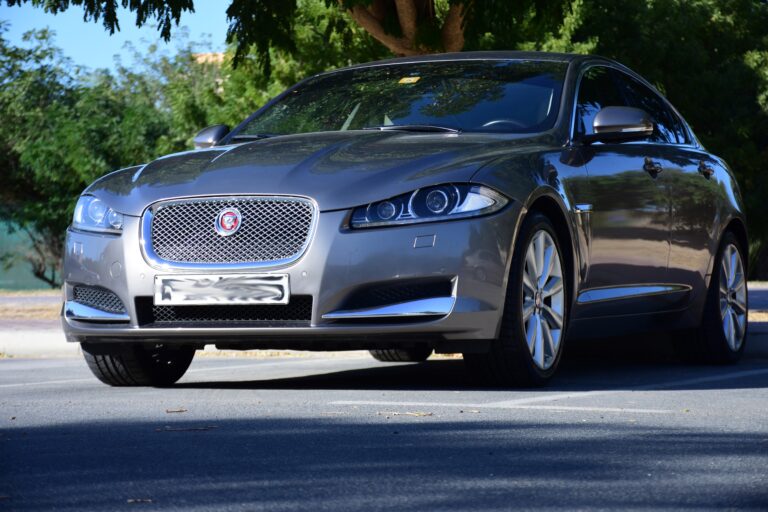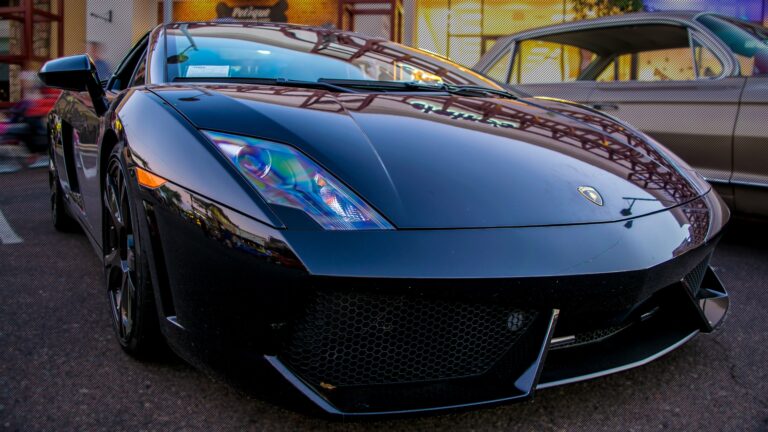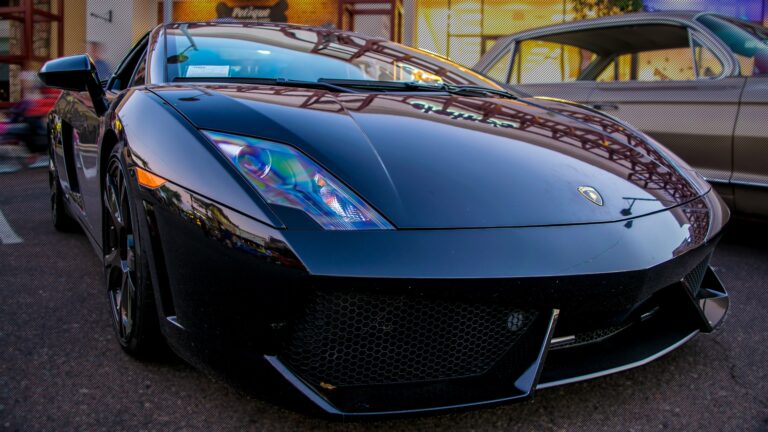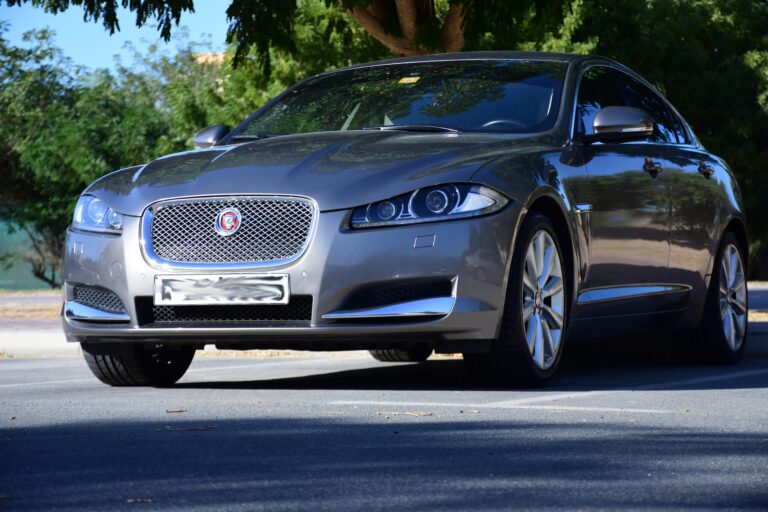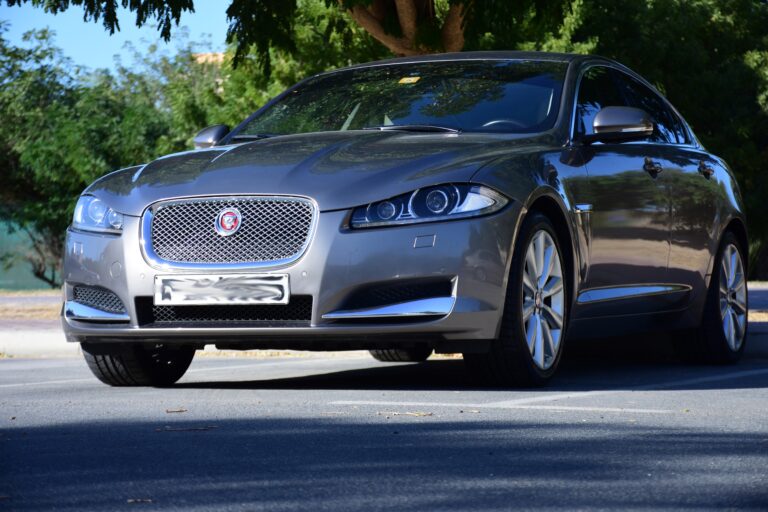Mexican Car Brands: A Comprehensive Guide to Automotive Innovation South of the Border
Mexican Car Brands: A Comprehensive Guide to Automotive Innovation South of the Border cars.truckstrend.com
Mexico, often recognized as a global automotive manufacturing powerhouse, is home to an extensive network of assembly plants for some of the world’s largest carmakers. Yet, beyond this industrial might lies a lesser-known but equally fascinating facet of its automotive landscape: the emergence of indigenous Mexican car brands. These pioneering companies, driven by innovation, passion, and a distinct national identity, are carving out their own unique space in the highly competitive global automotive market. This article delves into the world of Mexican car brands, exploring their history, their groundbreaking creations, the challenges they face, and their promising future.
Mexican car brands represent more than just vehicles; they embody a spirit of ingenuity and a testament to the nation’s growing capacity for high-value design and engineering. While they may not boast the mass-market presence of international giants, their focus on niche markets, cutting-edge technology, and bespoke craftsmanship offers a compelling narrative of automotive ambition and cultural pride. Understanding these brands is crucial for anyone interested in the diverse tapestry of the global automotive industry, offering insights into innovation born from unique regional perspectives.
Mexican Car Brands: A Comprehensive Guide to Automotive Innovation South of the Border
A Brief History of Mexico’s Automotive Landscape
Mexico’s journey in the automotive sector began in the early 20th century, primarily as a destination for foreign automakers seeking advantageous manufacturing bases. Companies like Ford, General Motors, and Volkswagen established significant operations, transforming Mexico into a major producer and exporter of vehicles. This extensive manufacturing ecosystem has cultivated a highly skilled workforce, robust supply chains, and a deep understanding of automotive production processes.
However, the leap from manufacturing foreign designs to conceptualizing and producing indigenous brands is a significant one. For decades, truly Mexican-designed and manufactured passenger vehicles were rare, often limited to specialized commercial vehicles like buses and trucks (e.g., DINA – Diesel Nacional, established in 1951). The late 20th and early 21st centuries marked a pivotal shift, as a new generation of Mexican entrepreneurs and engineers began to dream beyond assembly lines, envisioning cars that bore the stamp of Mexican innovation and design. This ambition led to the birth of the first truly Mexican car brands, daring to compete in specialized segments.
The Pioneers and Flagbearers: Prominent Mexican Car Brands
The landscape of Mexican car brands is characterized by innovation, often focusing on high-performance sports cars, luxury vehicles, or sustainable urban mobility solutions. Here are some of the most prominent names that have put Mexican automotive design on the global map:
Mastretta: The Trailblazer
Perhaps the most recognized name among Mexican car brands, Mastretta captured international attention with its striking MXT sports car. Founded by brothers Daniel and Carlos Mastretta in 1987, the company initially focused on automotive design and engineering services before venturing into vehicle manufacturing.
- Key Information: The MXT, first unveiled in 2008, was a lightweight, mid-engined two-seater sports car designed for exhilarating performance. It featured a turbocharged 2.0-liter Ford Duratec engine, producing around 250 horsepower, and a chassis primarily made of aluminum and carbon fiber. Its distinctive styling, inspired by Mexican culture and engineering prowess, quickly garnered comparisons to Lotus for its "performance through lightness" philosophy.
- Benefits/Unique Aspects: The MXT demonstrated Mexico’s capability to design and produce a globally competitive performance car. Its lightweight construction offered exceptional handling and acceleration, making it a true driver’s car. It became a symbol of Mexican automotive ambition.
- Challenges: Despite critical acclaim, Mastretta faced significant challenges in scaling production, securing consistent funding, and navigating the complexities of international distribution and homologation. Production numbers remained low, and the company ultimately ceased operations in its original form, though its legacy as a pioneer endures.

VUHL: Precision and Performance Redefined

VUHL (Vehicles of Ultra High-performance Lightweight), founded by brothers Iker and Guillermo Echeverría, represents the next evolution of Mexican high-performance engineering. Their flagship model, the 05, is a track-focused lightweight supercar designed for exhilarating performance both on and off the track.
- Key Information: The VUHL 05, launched in 2013, is an open-top, road-legal track car featuring a Ford EcoBoost engine (initially 2.0L, later 2.3L) producing over 360 horsepower. Its chassis is a bonded aluminum monocoque, with body panels made of carbon fiber, resulting in an incredibly low curb weight (under 700 kg). The car is meticulously engineered, often incorporating aerospace technology and precision manufacturing techniques.
- Benefits/Unique Aspects: VUHL has successfully positioned itself in the ultra-niche segment of lightweight, high-performance track-day cars, competing with established brands like KTM X-Bow and Ariel Atom. Their commitment to engineering excellence, global partnerships (e.g., with Multimatic), and strong marketing (including appearances at Goodwood Festival of Speed and Forza Motorsport) have given them international credibility.
- Practical Advice: For enthusiasts, the VUHL 05 offers an unadulterated driving experience, prioritizing raw performance and driver engagement. Its exclusivity and bespoke nature make it a collector’s item. VUHL’s success demonstrates the importance of a clear market niche and strong technical partnerships for emerging automakers.

Zacua: Driving Towards Sustainable Mobility
Shifting gears from high-performance to sustainable urban transport, Zacua stands out as Mexico’s first electric car brand. Founded in 2017, Zacua is committed to offering environmentally friendly mobility solutions for the Mexican market.
- Key Information: Zacua produces two primary models: the MX2 (a coupé) and the MX3 (a hatchback). Both are compact, two-seater electric vehicles designed for city driving. They feature a modest electric motor, offering a top speed of around 85 km/h and a range of approximately 160 km, suitable for daily urban commutes. The design emphasizes simplicity, efficiency, and a small footprint.
- Benefits/Unique Aspects: Zacua represents Mexico’s foray into electric vehicle production, addressing local demand for sustainable transport. Its focus on compact urban vehicles makes it practical for congested city environments. The brand promotes environmental consciousness and local manufacturing of EV components.
- Considerations/Challenges: As an early entrant in the EV market, Zacua faces challenges related to battery technology advancements, charging infrastructure availability in Mexico, and competing with larger, more established global EV manufacturers. Building consumer trust in a new technology from a new brand is also a significant hurdle. However, their commitment to local production and a clear urban niche gives them a distinct advantage.
Inferno Automobili: The Hypercar Ambition
While still largely in the conceptual and prototype phase, Inferno Automobili has generated significant buzz with its audacious hypercar, the Inferno Exotic Car.
- Key Information: Unveiled in 2015, the Inferno aims to be an ultra-exclusive hypercar with a claimed 1,400 horsepower and a top speed exceeding 395 km/h. Its most distinctive feature is its "metal foam" body, a zinc-aluminum-silver alloy that is said to be incredibly strong, flexible, and lightweight, capable of absorbing impacts like a crumple zone.
- Types/Categories: This car falls squarely into the extreme hypercar segment, targeting ultra-wealthy collectors and performance enthusiasts.
- Challenges: Developing a hypercar from scratch is an immense undertaking, requiring massive investment, advanced engineering, and complex production processes. Moving from concept to full production and sales is a monumental task, and the Inferno faces the typical skepticism and hurdles associated with such ambitious projects from new entrants. Its success hinges on securing funding, proving its technology, and establishing a robust production and distribution network.
Niche Markets and Specialized Production
The common thread among successful and aspiring Mexican car brands is their focus on niche markets. Unlike global giants that aim for mass production, Mexican brands often target specific segments:
- High-Performance/Track Cars: VUHL and Mastretta exemplify this, catering to enthusiasts who prioritize driving dynamics and exclusivity.
- Urban Electric Vehicles: Zacua targets the growing demand for sustainable, compact city mobility.
- Ultra-Luxury/Hypercars: Inferno Automobili aims for the pinnacle of automotive engineering and exclusivity.
Benefits of Niche Focus:
- Lower Barrier to Entry: Competing directly with large automakers in mass markets is nearly impossible. Niche markets allow smaller companies to differentiate.
- Agility and Innovation: Smaller teams can be more agile, innovate faster, and respond quickly to specific customer needs.
- Brand Identity: A clear niche helps build a strong, recognizable brand identity focused on unique selling propositions.
Challenges of Niche Focus:
- Limited Scale: Niche markets inherently mean lower production volumes, which can make economies of scale difficult to achieve.
- High Unit Costs: Lower volumes often lead to higher per-unit production costs.
- Funding: Attracting significant investment for low-volume production can be challenging.
- Distribution and Service: Establishing a global sales and service network for limited production vehicles is complex and expensive.
Innovation, Design, and Engineering Philosophy
Mexican car brands showcase a distinct blend of global engineering principles and local creative flair. Their design philosophy often emphasizes:
- Lightweight Construction: Materials like carbon fiber, aluminum, and even specialized alloys are extensively used to maximize performance and efficiency.
- Performance-Oriented Engineering: A strong focus on aerodynamics, suspension tuning, and powerful powertrains, particularly for sports and hypercars.
- Distinctive Aesthetics: Designs that stand out, often incorporating bold lines, unique proportions, and sometimes subtle nods to Mexican artistic traditions.
- Practical Advice on Design: For aspiring car designers and engineers, these brands demonstrate the value of pushing boundaries, specializing in specific areas (e.g., chassis dynamics, EV powertrains), and collaborating with global experts.
Challenges and the Road Ahead for Mexican Automakers
Despite their impressive achievements, Mexican car brands face significant hurdles:
- Funding and Investment: Securing substantial capital for R&D, production facilities, and marketing is a perpetual challenge. Unlike established players, new brands lack the deep pockets or easy access to capital markets.
- Global Market Penetration: Building brand recognition and trust on a global scale is difficult without massive marketing budgets. Competing with century-old brands requires exceptional product quality and unique value propositions.
- Supply Chain Integration: While Mexico has a robust automotive supply chain, sourcing specialized components for high-performance or EV technologies can be complex and costly for smaller players.
- Regulation and Homologation: Meeting diverse safety and emissions regulations across different countries is a time-consuming and expensive process.
- Building Consumer Trust: Convincing consumers to choose a new, lesser-known brand over established names requires a flawless product, excellent after-sales service, and strong word-of-mouth.
Solutions and Opportunities:
- Strategic Partnerships: Collaborating with established component suppliers, engineering firms, or even larger automakers can provide access to technology, expertise, and economies of scale.
- Leveraging Local Talent: Mexico boasts a rich pool of skilled engineers, designers, and technicians. Nurturing this talent and providing opportunities for innovation is crucial.
- Government Support: Policies that incentivize R&D, offer tax breaks for new automotive ventures, and support export efforts can significantly boost the industry.
- Focus on Sustainability: For electric vehicle brands like Zacua, aligning with global trends towards sustainability can open doors to new markets and investment opportunities.
- E-commerce and Direct Sales: For niche brands, exploring direct-to-consumer sales models can reduce distribution costs and build closer customer relationships.
Practical Advice and Actionable Insights
For readers interested in supporting or learning more about Mexican car brands:
- Research Thoroughly: Each brand has a unique story and focus. Delve into their philosophy, engineering, and market positioning.
- Engage with Communities: Online forums, social media groups, and automotive events (like the Goodwood Festival of Speed where VUHL often appears) are great places to connect with owners and enthusiasts.
- Consider Niche Markets: If you’re an automotive enthusiast looking for something truly unique, these brands offer exclusivity and a distinct driving experience that mass-market cars cannot.
- Support Innovation: By taking an interest, sharing their stories, and considering their products, you contribute to the growth and recognition of Mexican automotive innovation.
- For Aspiring Entrepreneurs: Mexican car brands teach valuable lessons in identifying a clear market niche, focusing on excellence in engineering, and the importance of perseverance in the face of significant challenges.
Key Mexican Car Brands & Market Positioning
| Brand | Key Model(s) | Vehicle Type | Market Segment/Price Range (General) | Key Characteristic |
|---|---|---|---|---|
| Mastretta | MXT | Mid-engine Sports Car | High-Performance Niche / ~$60,000 – $75,000 (historical) | Lightweight, performance-focused, iconic Mexican sports car |
| VUHL | 05, 05 RR | Lightweight Track/Road Car | Ultra High-Performance Niche / ~$100,000 – $150,000+ | Precision engineering, track-ready, global recognition |
| Zacua | MX2 (Coupé), MX3 (Hatchback) | Compact Electric Vehicle | Urban Mobility / ~$25,000 – $30,000 (est. MXN price) | Sustainable, urban-focused, Mexico’s first EV |
| Inferno Automobili | Inferno Exotic Car | Ultra Hypercar | Extreme Luxury/Performance / Multi-million (projected) | "Metal foam" body, extreme performance claims, concept phase |
| DINA (Diesel Nacional) | Trucks, Buses | Commercial Vehicles | Commercial/Fleet / Varies by model | Historical significance in Mexican commercial transport |
Note: Price ranges are approximate and subject to change, especially for low-volume or conceptual vehicles. Zacua’s pricing is often quoted in Mexican Pesos and varies based on market conditions.
Conclusion
The story of Mexican car brands is one of ambition, resilience, and a growing capacity for high-end automotive design and engineering. From the pioneering spirit of Mastretta to the global precision of VUHL, and the sustainable vision of Zacua, these companies are not just building cars; they are building a legacy of innovation that reflects Mexico’s unique position in the global automotive industry. While the path to mass-market success remains challenging, their focus on niche markets, cutting-edge technology, and distinctive design elements sets them apart. As the automotive world continues to evolve, driven by technological advancements and shifting consumer preferences, Mexican car brands stand as a testament to the power of national ingenuity, poised to carve out an even greater presence on the world stage.
Frequently Asked Questions (FAQ)
Q1: Are there any Mexican car brands that produce mass-market vehicles like Ford or Nissan?
A1: Currently, no Mexican car brand produces mass-market vehicles at the scale of international giants. Mexican brands typically focus on niche segments such as high-performance sports cars, luxury vehicles, or specialized electric urban cars due to the significant capital and infrastructure required for mass production.
Q2: Are these Mexican car brands available for purchase outside of Mexico?
A2: It varies by brand. VUHL, for instance, has a global presence with distributors in several countries and ships its cars internationally. Mastretta MXT had limited international availability. Zacua is primarily focused on the Mexican domestic market for now. Inferno Automobili is still in the prototype/concept phase.
Q3: How do Mexican car brands compare in terms of quality and performance to international brands?
A3: Brands like VUHL are highly regarded for their engineering quality and performance, often benchmarked against established niche brands globally. They utilize high-quality components, often sourced internationally, and employ advanced manufacturing techniques. Their performance in their respective niches is competitive.
Q4: What are the main challenges faced by Mexican car brands?
A4: Key challenges include securing sufficient funding for R&D and production, establishing global distribution and service networks, building brand recognition and trust against established competitors, and navigating complex international regulations for safety and emissions.
Q5: Are there any government initiatives in Mexico to support local car brands?
A5: While Mexico has a robust automotive industry support system for manufacturing in general, specific, large-scale government initiatives solely for fostering indigenous passenger car brands are less common compared to incentives for foreign investment or general automotive R&D. However, there is growing interest in supporting innovation and clean energy technologies, which could benefit EV startups like Zacua.
Q6: What does the future hold for Mexican car brands?
A6: The future looks promising for niche players who can continue to innovate and identify unmet market needs. The global shift towards electric vehicles also presents a significant opportunity for new entrants like Zacua. Continued focus on unique design, high-performance engineering, and sustainable solutions will be key to their long-term success and increased global recognition.

